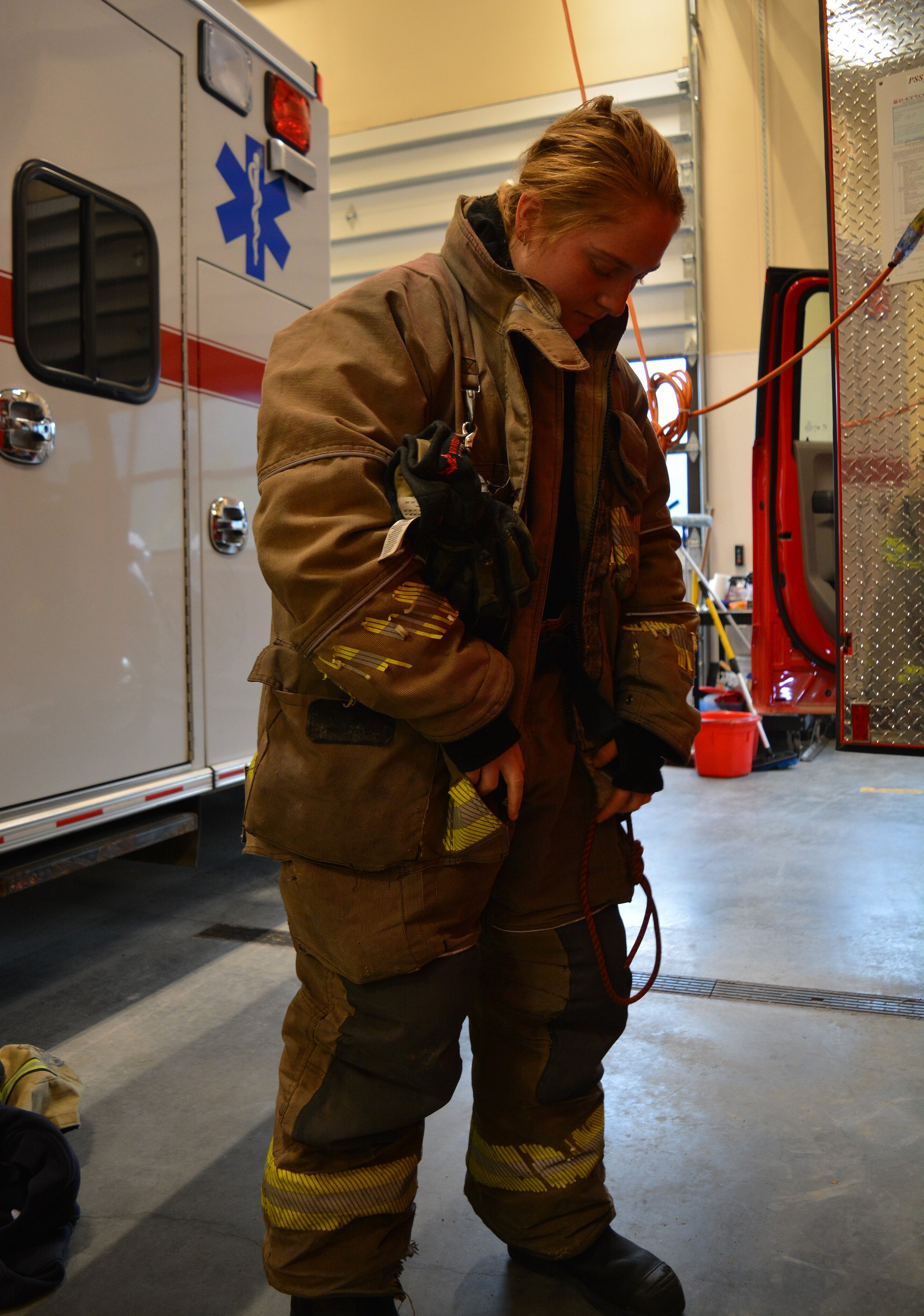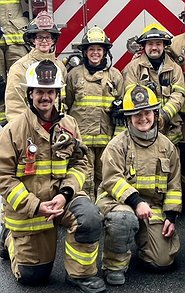Firefighting 'brotherhood' includes women firefighters, too
OSBURN — In the five years since she joined Shoshone County District No. 1 as an EMT and firefighter, Melanie Shelton has only occasionally experienced negative interaction with the public when it comes to her gender.
Stereotypes about only men being firefighters still crop up from time to time, however.
Fire Chief John Miller said that, in recent years, women in District No. 1 make up 50% of their firefighting staff and 50% of the paramedic team. This is a much higher rate than figures compiled by the National Fire Protection Association. The average of women firefighters nationally is 9%, and 5% of all career firefighters are women. In District No. 2, the percentage of women on the firefighting staff is 15%.
Miller said he hadn’t even realized that his department stood out in that regard until his wife asked him about it when the department hired Paige Bischofberger as a firefighter and EMT.
“There are certain things that are challenges for us that are not challenges for others, so it’s very stressful because we are held to that standard, but nobody really knows the difference when you go to a fire. If someone’s kid is inside (a fire), their kid is inside. If anything, it’s very motivating to just be that extra bit better and prove that the 5% can perform,” Bischofberger said.
Bischofberger and probationary firefighter Averie Kinsey of District No. 2 sat down with Miller to talk through their experiences and better fitting gear quickly emerged as something that has made a big improvement for women working as firefighters.
“It’s been just in the last few years that they’ve started making gender-specific suits,” Miller said.
A study by the Fire Protection Research Foundation found that personal protective equipment fit issues can result in women firefighters having a 33% higher risk of being injured in the line of duty.
“I do also think it’s very helpful to have shift coworkers who are female because we go through the same gripes. We’re all relatively the same height and we all know how certain things impact us,” Bischofberger said.
Turnouts are the fire resistant reflective coat that keeps firefighters safe, but historically, turnouts have been sized to better fit the height and waist proportions for men.
“Our departments just got new turnouts and it was awesome, because the original turnouts I was given were way too big and the sleeves didn’t fit me. With the new turnouts, they fit close to my body and they’re my exact measurements,” Kinsey said.
Fitted turnouts are critical to both safety and comfort, and having the mobility and weight calibrated to a firefighter’s height and proportions means setting them up for success on the job.
“I never saw female firefighters where I’m from in New Mexico. When I came up here and I saw females, it was very encouraging to see that because I felt a lot more comfortable being able to accomplish my dream of being a firefighter,” Kinsey said.
Kinsey said that while she’s newer to firefighting, she has never felt like she’s been treated differently and finds it an honor to be joining a small group of women in the field.
Miller said that as he’s become more cognizant of gendered stereotypes among firefighters, there is still work to be done. The character of a firefighter is the most important thing for him when considering a firefighter candidate.
“You’re either born with it or you’re not. Skills can easily be trained to get better, but you can’t change somebody’s moral fiber to be a good person and that’s what the service needs. For our district at least, the crews have a huge say in who they want to hire. The chief’s interview is really more of a formality. I can speak to these two women here. They were both the number one choice at the time they tested,” Miller said.
Firefighter and the ‘brotherhood’
Miller said that the way we talk can subtly reinforce gender roles and if kids hear “fireman” instead of “firefighter,” it can rule out the career from their mind as a possibility to consider.
“I have a daughter and when I think of that, I think maybe we should drop the use of fireman and just use firefighter. Young kids, especially young girls won’t even know it’s a possibility that they can be a firefighter unless they see it,” Miller said.
Regardless of gender, all firefighters are going through the same hiring requirements with the same physical demands and figure out how to make things like reach or height differences work for them.
“It’s been pretty all inclusive for me, I haven’t noticed a huge difference. We keep everybody at a pretty high standard here,” Bischofberger said.
Kinsey said that the drive for the department to flow is far more critical than any small differences and it’s working together that ultimately saves lives. Bischofberger agreed and said that the brotherhood of firefighters feels like it encapsulates her and her female coworkers as much as it does for her male coworkers.
“People recently have been saying ‘the brotherhood,'” and that if women are involved, then it’s not a brotherhood. These guys are like brothers to us, it’s a family, and gender aside, it’s an entire group of people who are just doing the best they can. We live with these people for a third of our lives, so the dynamic between your coworkers is really important,” Bischofberger said.
 Paige Bischofberger practices putting on her turnouts (heavy fire resistant yellow jacket) and firefighting gear at Shoshone County District No. 1. According to the publication, Fire Engineering, firefighters need to have turnouts that are tailored to fit to the body. The tailored fit will reduce weight and bulk while providing increased mobility to enhance response time.
Paige Bischofberger practices putting on her turnouts (heavy fire resistant yellow jacket) and firefighting gear at Shoshone County District No. 1. According to the publication, Fire Engineering, firefighters need to have turnouts that are tailored to fit to the body. The tailored fit will reduce weight and bulk while providing increased mobility to enhance response time.



